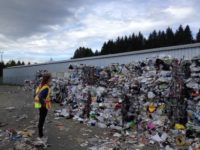The main question you need to ask is whether the regulation, 1910.120, applies to you and your operations. If your site handles hazardous waste or, even more so, if you are a large-quantity generator you need to verify at what levels the standard fits your operation. All employees who might respond to spills and emergencies involving hazardous waste are also included in the regulation.
There are two types of HAZWOPER training set out by OSHA:
An overview
Let’s take an overview of a 40-hour class, which will give you a good idea of what HAZWOPER is all about:The OSHA regulation — The students should become familiar with 1910.120, gaining a general knowledge of what the 28-page regulation entails. Get to know the definitions included in the reg.
General safety principles — A written safety and health program must be in place to meet the HAZWOPER regulation. Students need to know what a safety and health plan consists of and the importance of having one in writing.
Regulatory agencies — There are several regulatory agencies involved in the governing of sites. A good knowledge of the agencies and their roles is valuable to anyone working with hazardous waste. Also, get to know what their acronyms stand for (e.g., RCRA, CERCLA and SARA).
Site work plan — Each site will have a plan in place, which identifies an organizational structure and the role of each person. The students should be able to identify roles and responsibilities for a typical waste site operation. The roles will include emergency response assignments.
Site characterization — A preliminary evaluation of a site’s characteristics must be made to identify any hazards that may have to be dealt with before entering the site. This characterization will become more detailed after entering the site. Personal protective equipment (PPE) needs are identified at this point.
Hazard communications — Working with Material Safety Data Sheets (MSDS) and chemical lists is a critical part of the training. Students should be well-versed in the hazards of chemicals. Radioactive wastes should also be discussed. The students should understand the various types of labels as well as the NFPA triangle.
Monitoring — The use of monitoring equipment is studied. Students should practice hands-on with a four-gas monitor and one or more types of organic detectors. Sampling techniques should also be reviewed.
Medical surveillance — A medical program should be developed to meet the needs of specific sites. The program should include pre-employment, periodic and termination health assessments. Recordkeeping is essential because you will be establishing a baseline and then ongoing monitoring of the workforce.
Personal protective equipment — Along with effective engineering controls and work practices to protect workers from hazardous chemical contact, a good PPE program is required. Students should understand the levels of protection (Levels A through D) and perform a hands-on activity that requires wearing various levels of protection. All four levels of protection will include gloves and chemical-protected steel-toed shoes or boots.
Decontamination — Workers need to learn the techniques of decontamination. How the PPE is cleaned as the worker removes the various items is a very detailed and time-consuming procedure.
Respiratory program — All employees who are or may be exposed to hazardous substances or health hazards at or above the established permissible exposure limits will need to participate in a respiratory program. The program will consist of training in the types of respiratory equipment and a fit-test program.
Emergency response — A written emergency response plan will have to be in place at all clean-up sites. The students will need to be trained on emergency response plans.
Combining the topics
As you look at the list of topics, you will need to imagine how they might fit into a 40-hour training class. Various training methods will need to be used, and a few topics such as PPE, decontamination and respiratory will require hands-on sessions with students donning the equipment.There are several good HAZWOPER training classes offered throughout the U.S. This training is important to your employees, so be sure to investigate and find the class that fits your needs.
